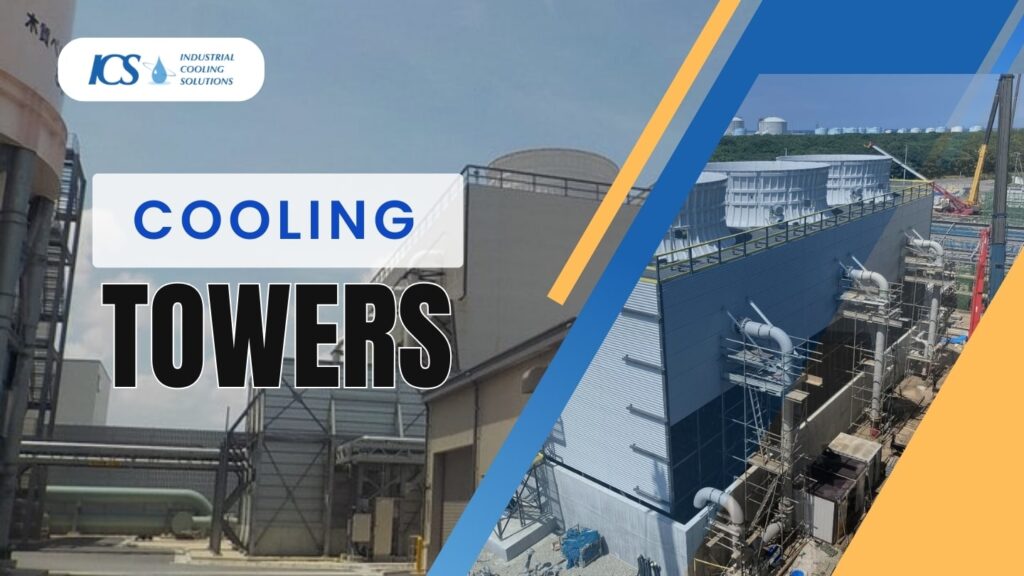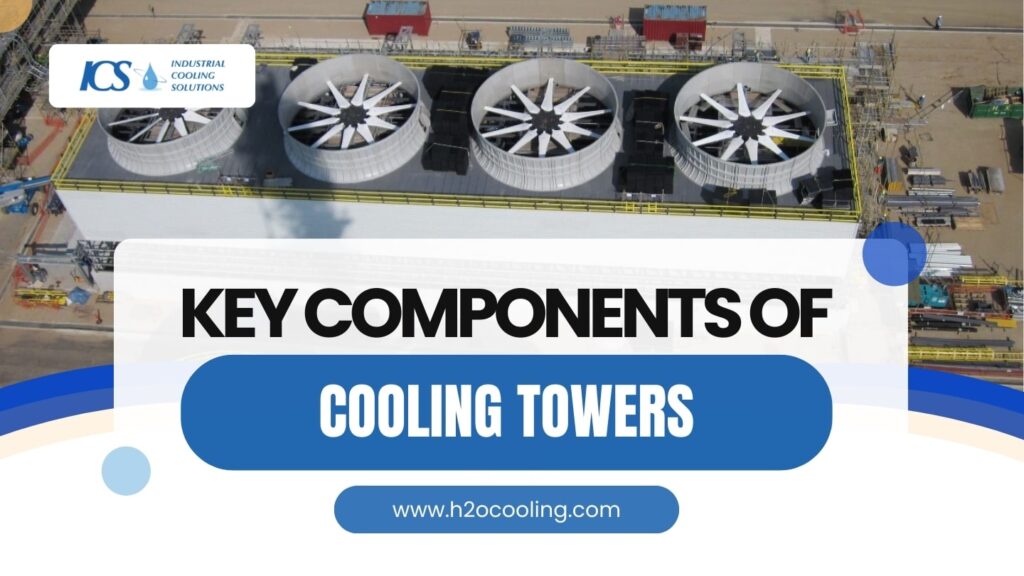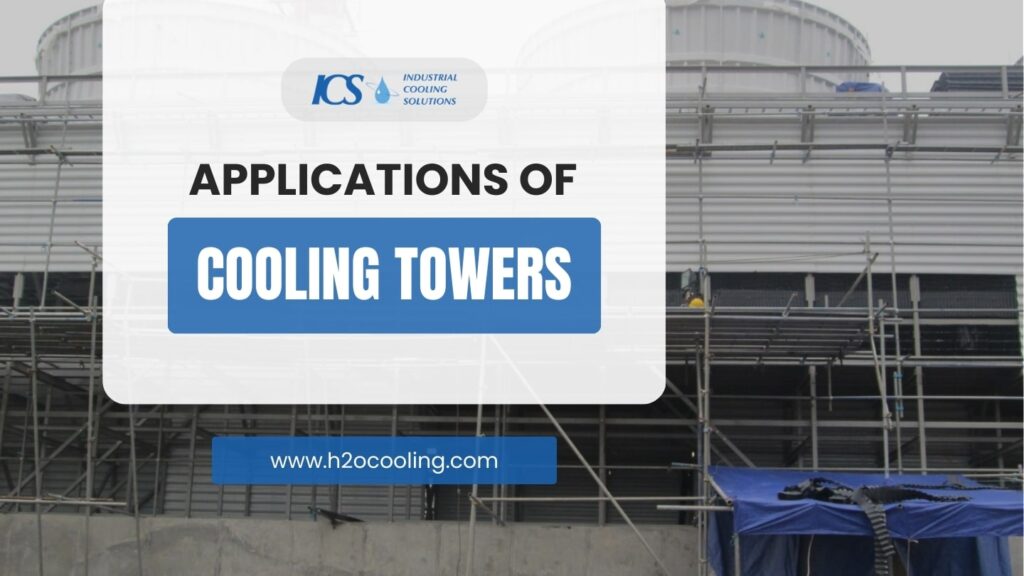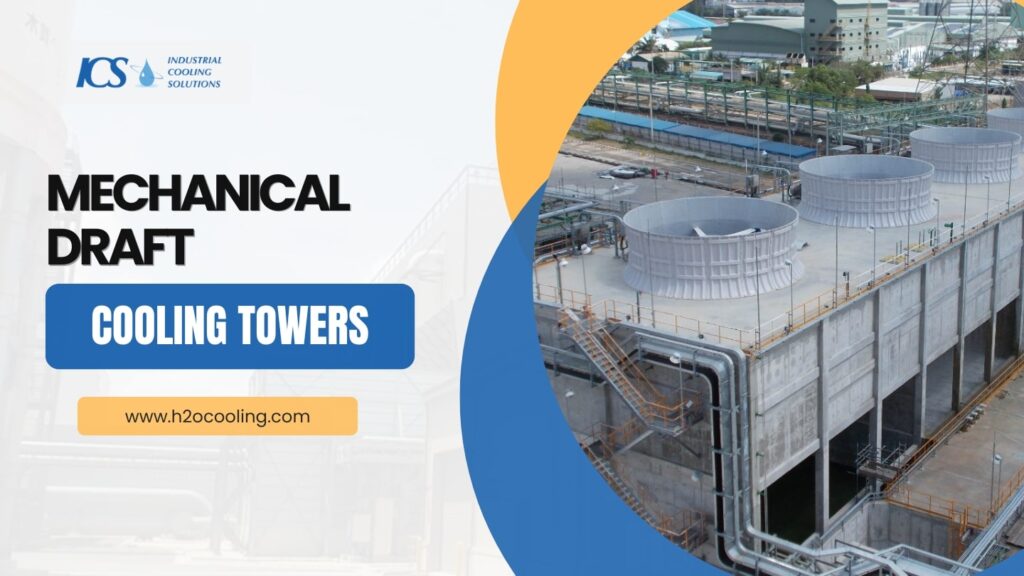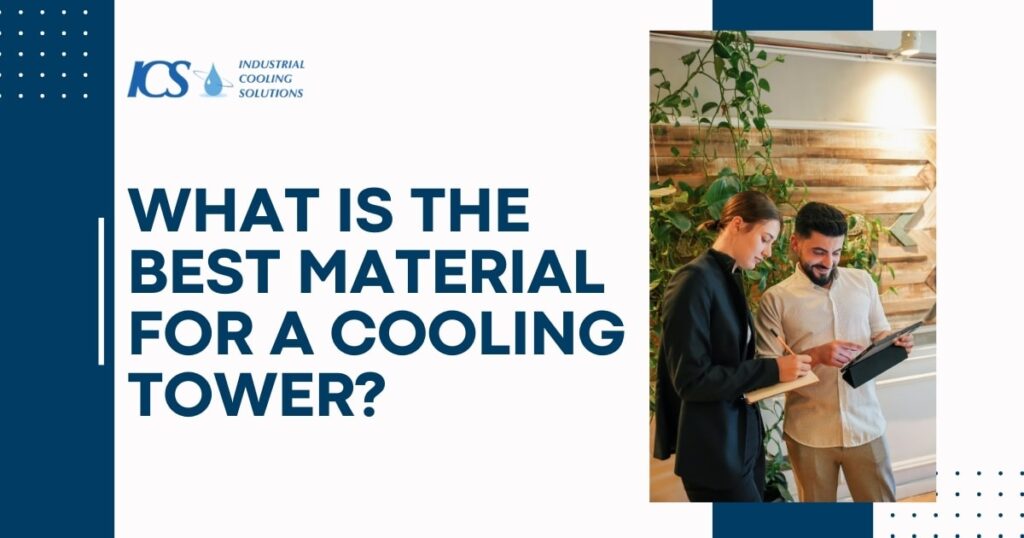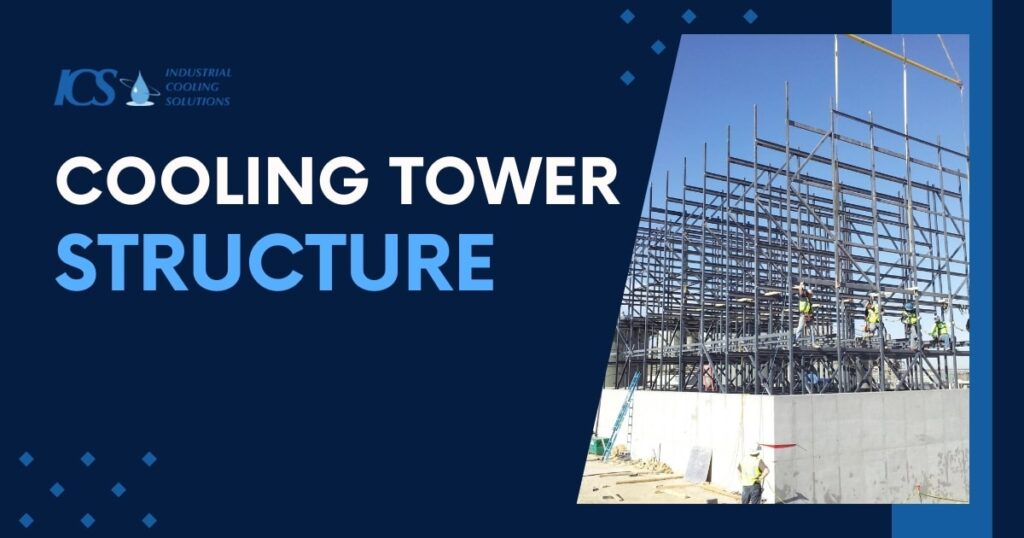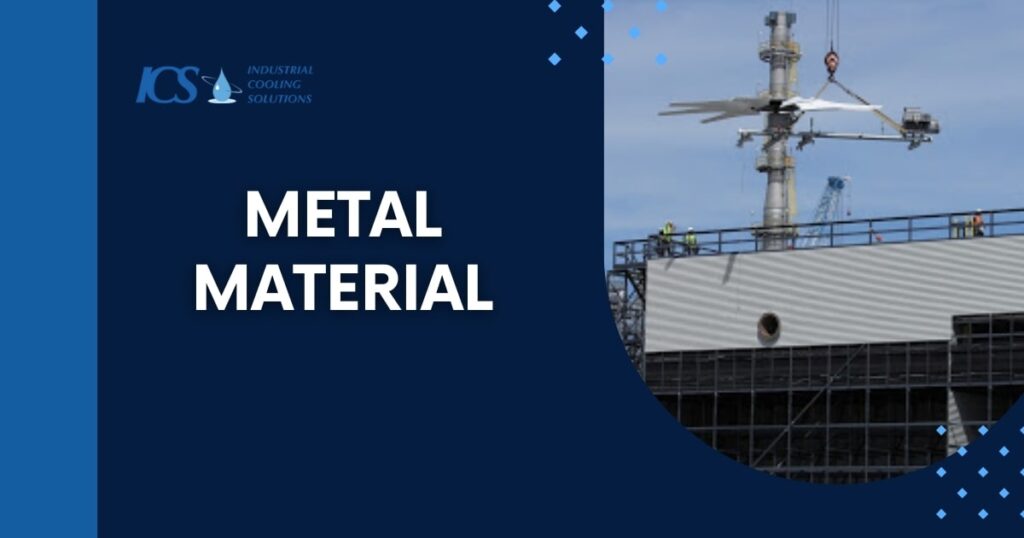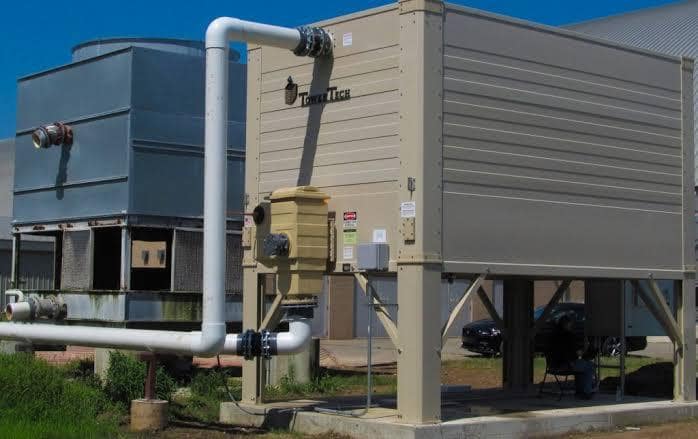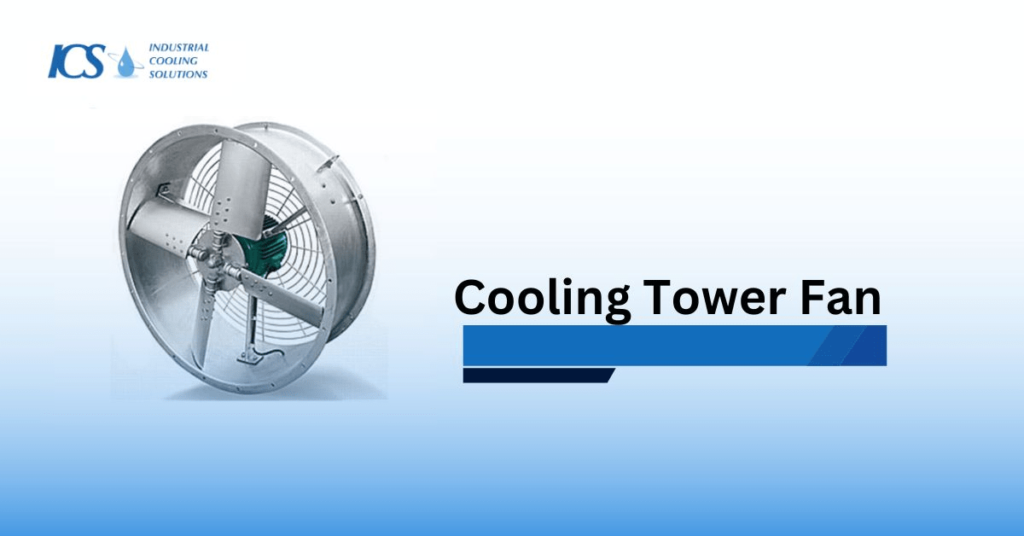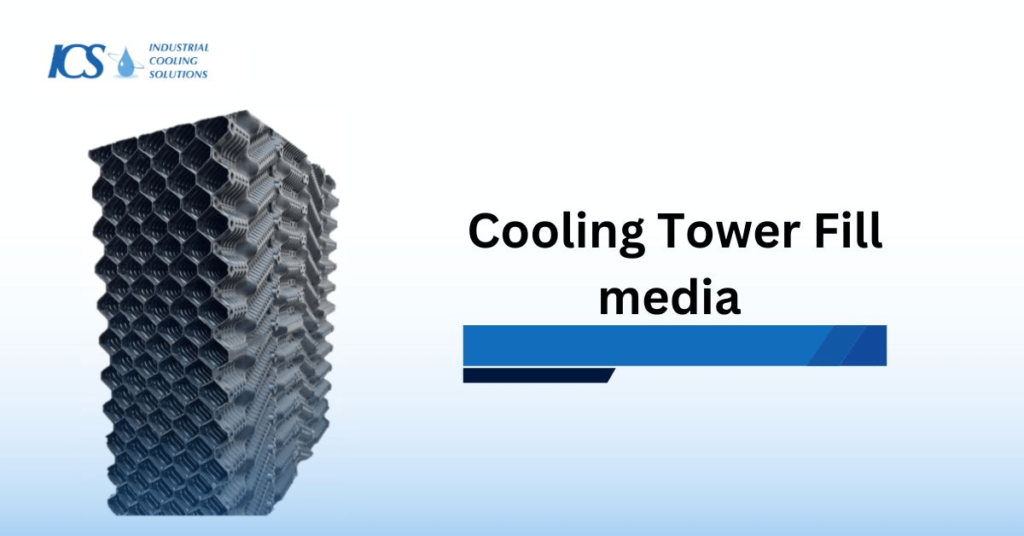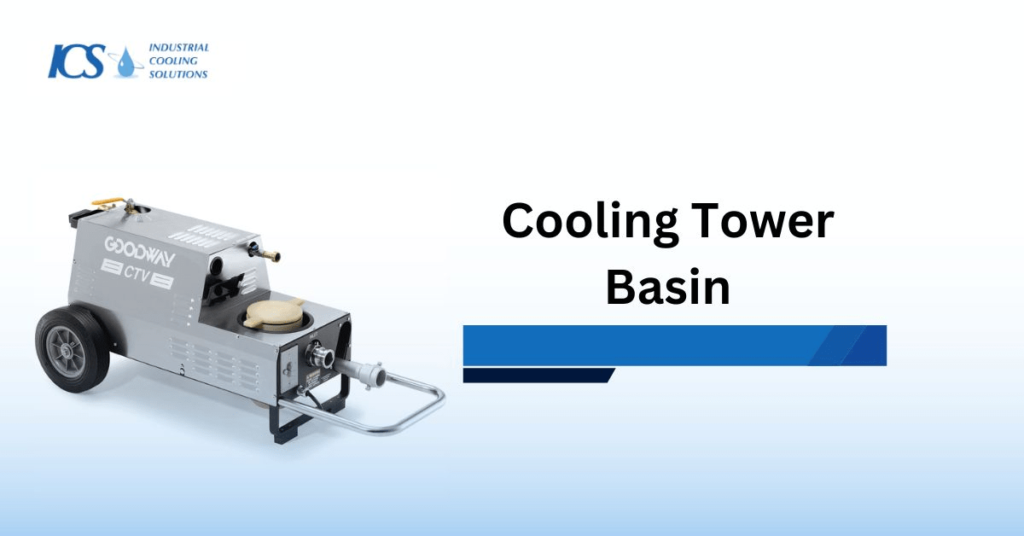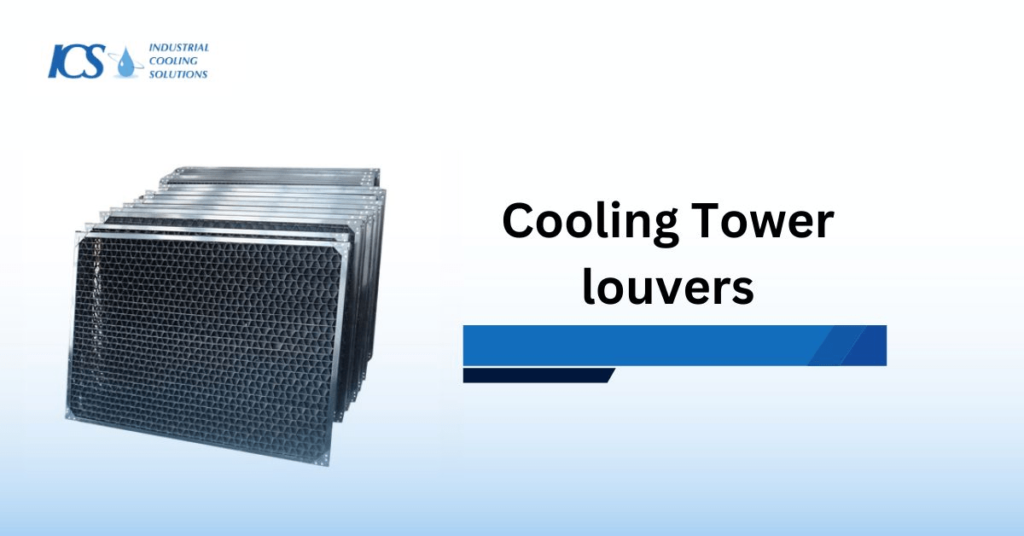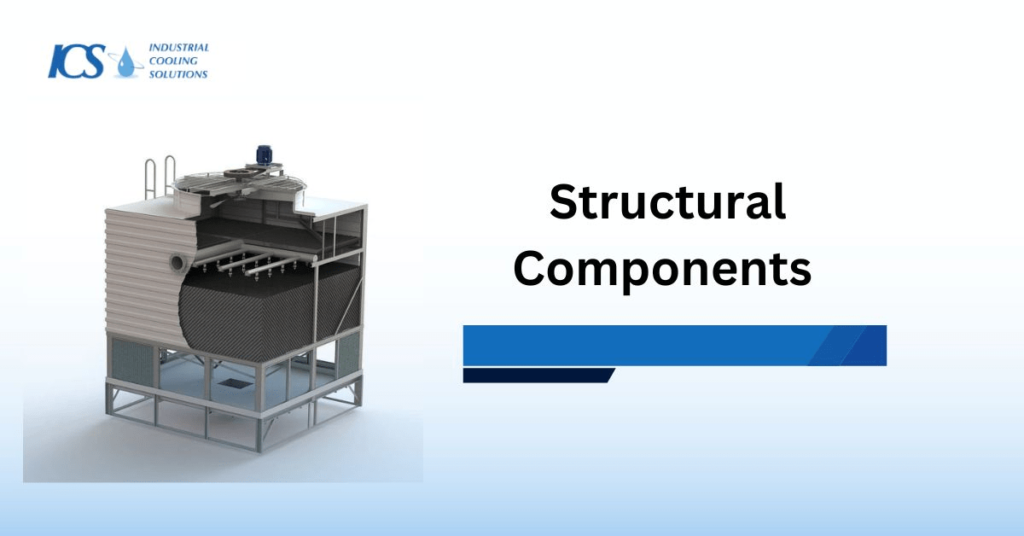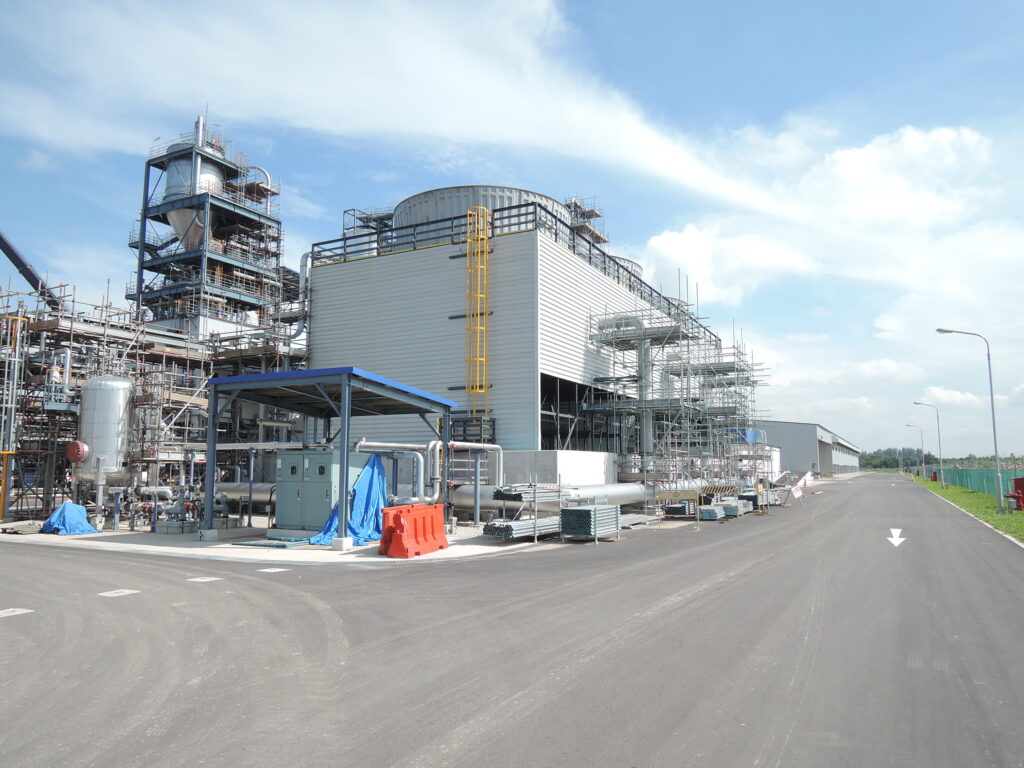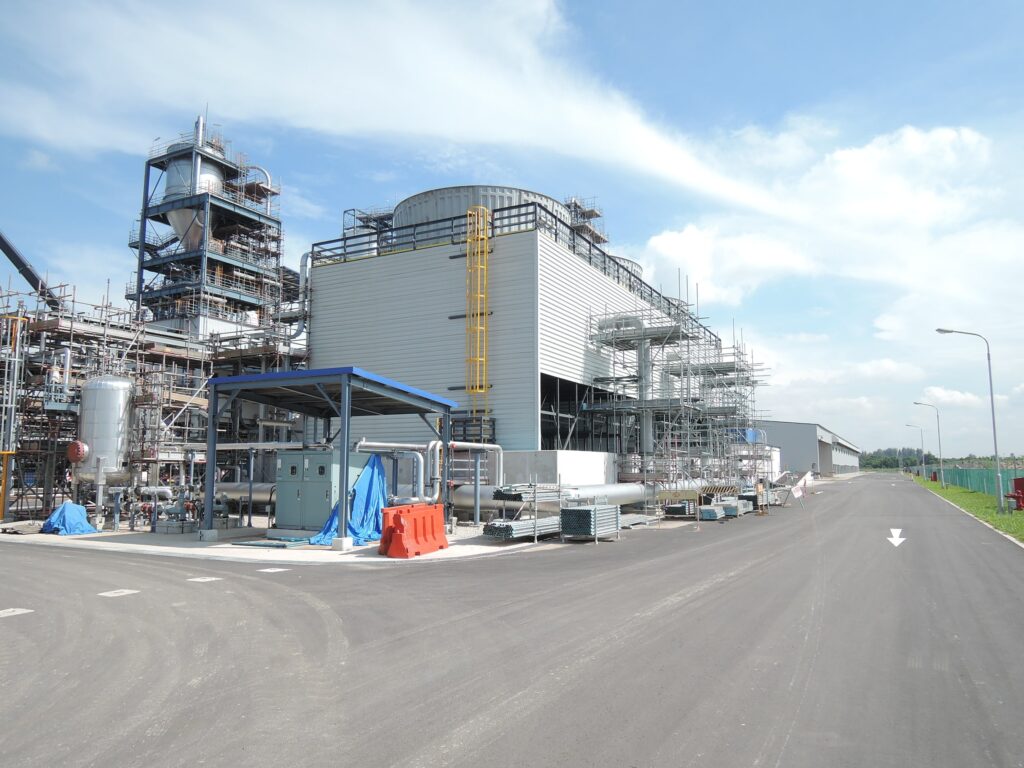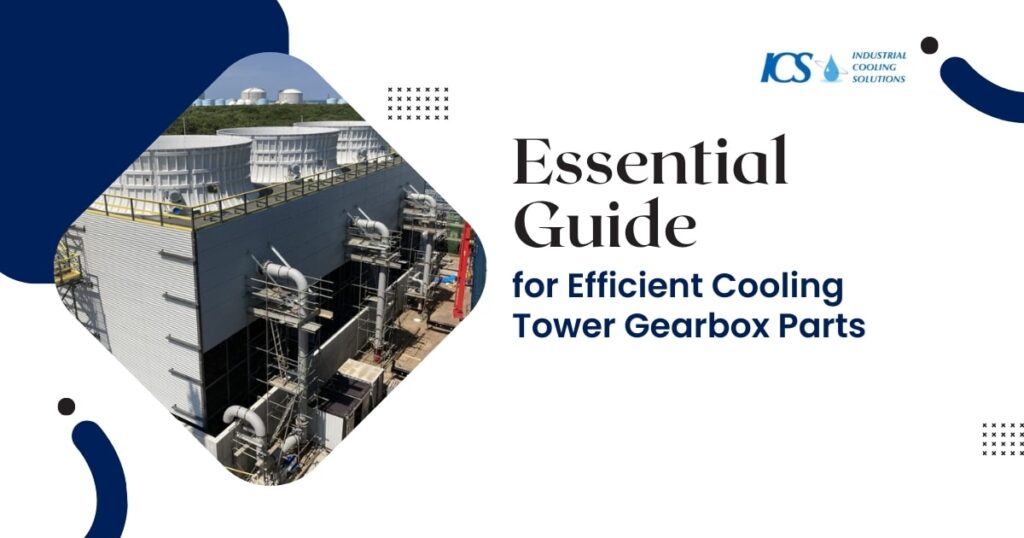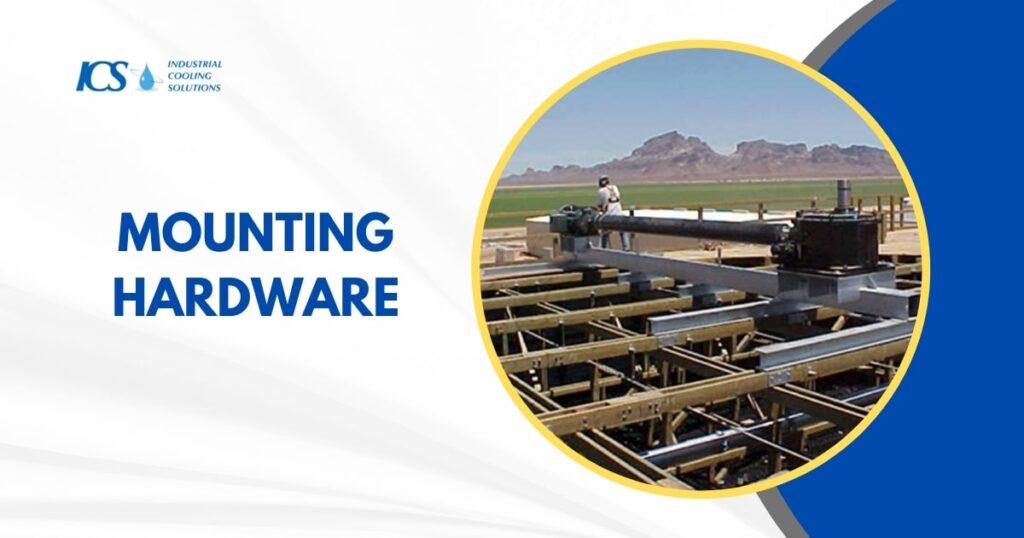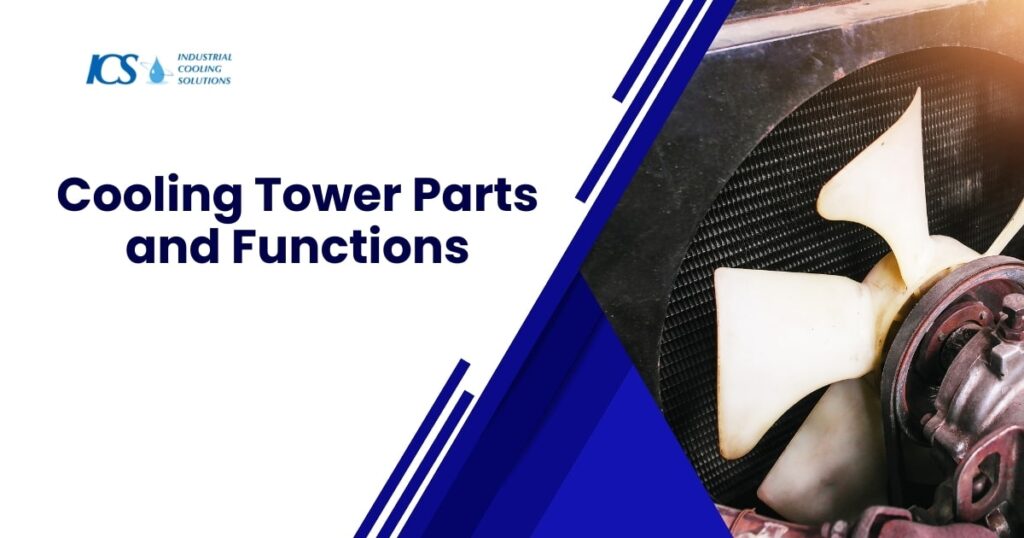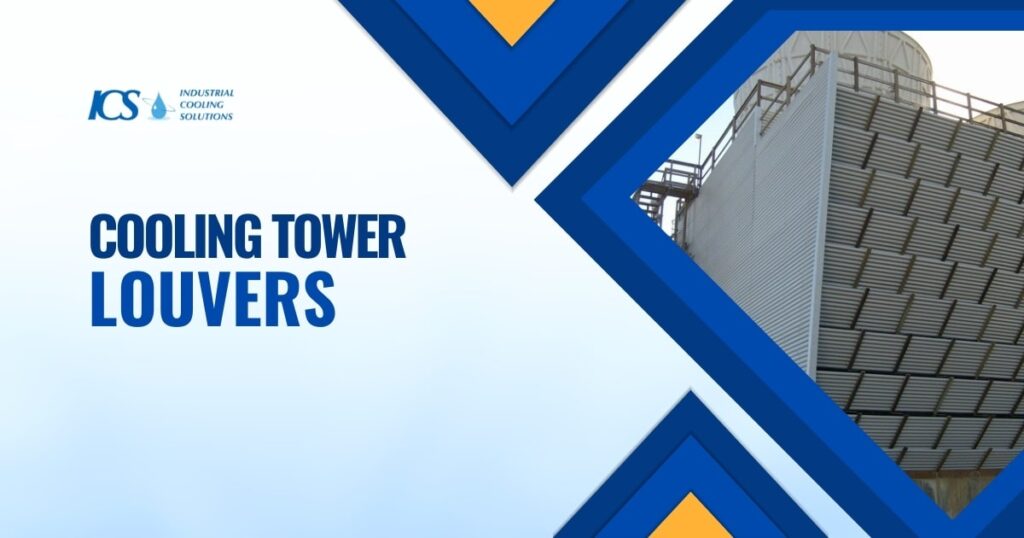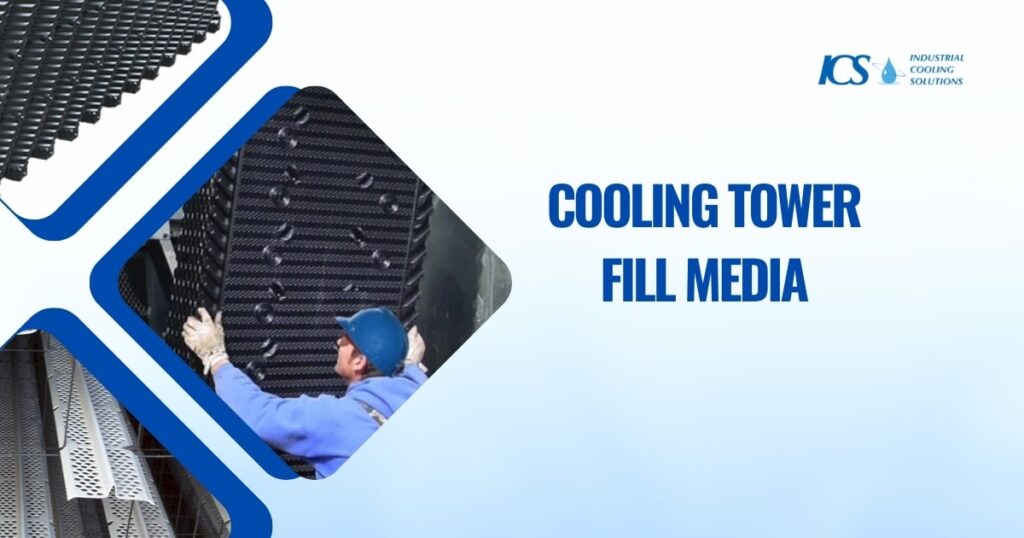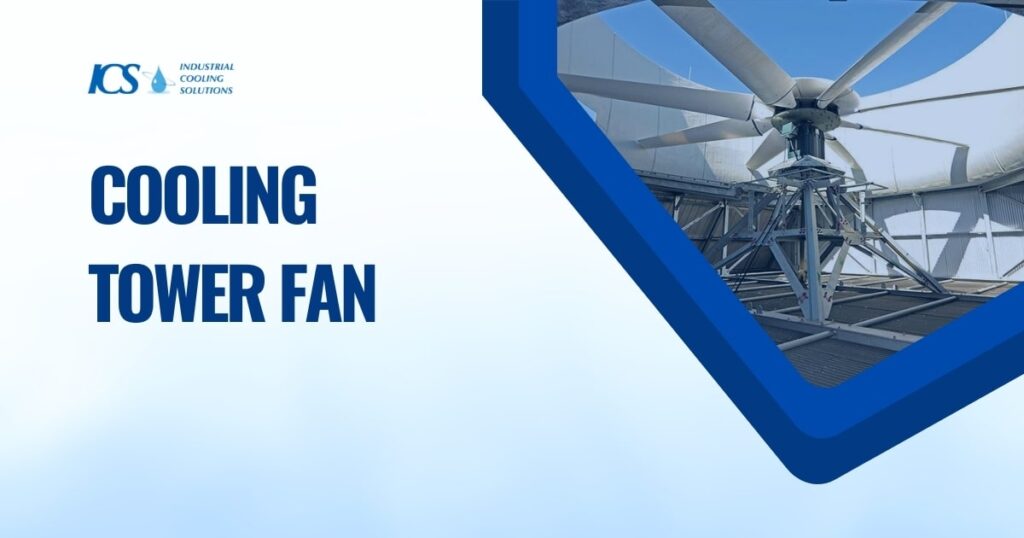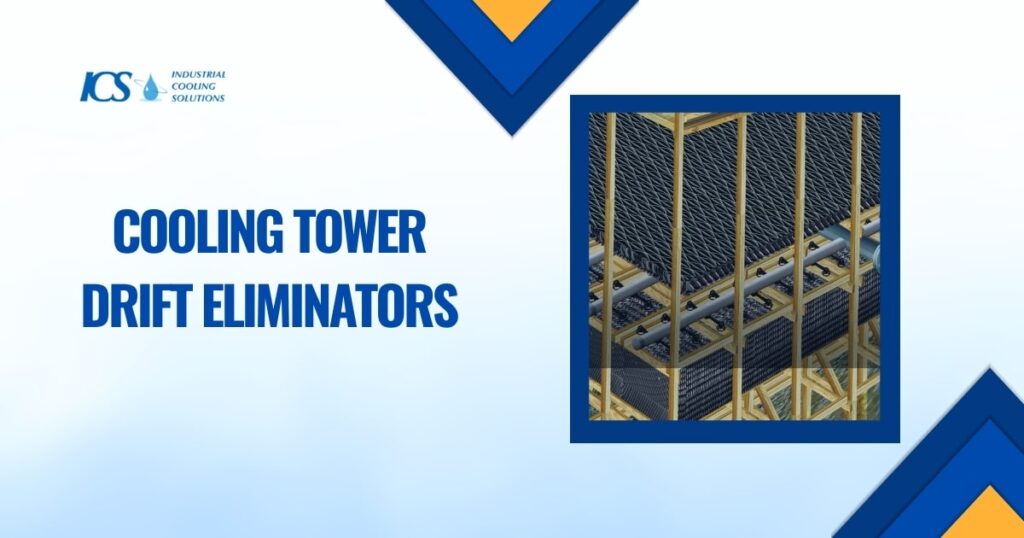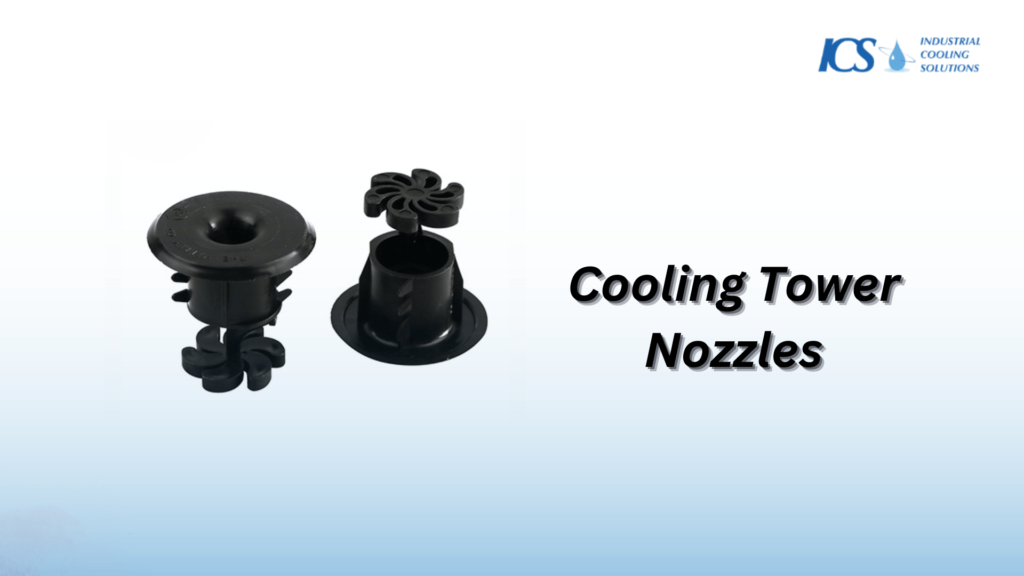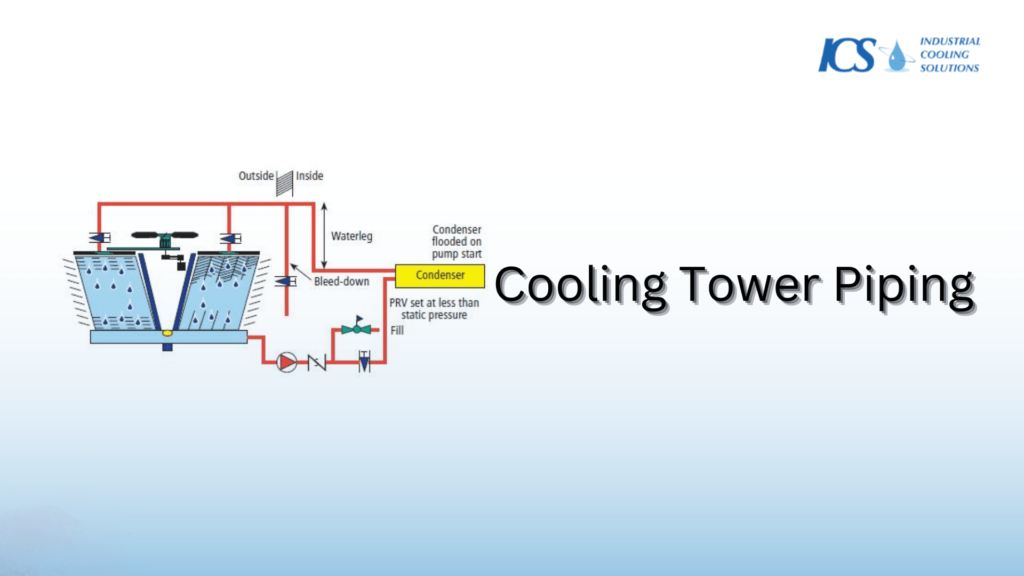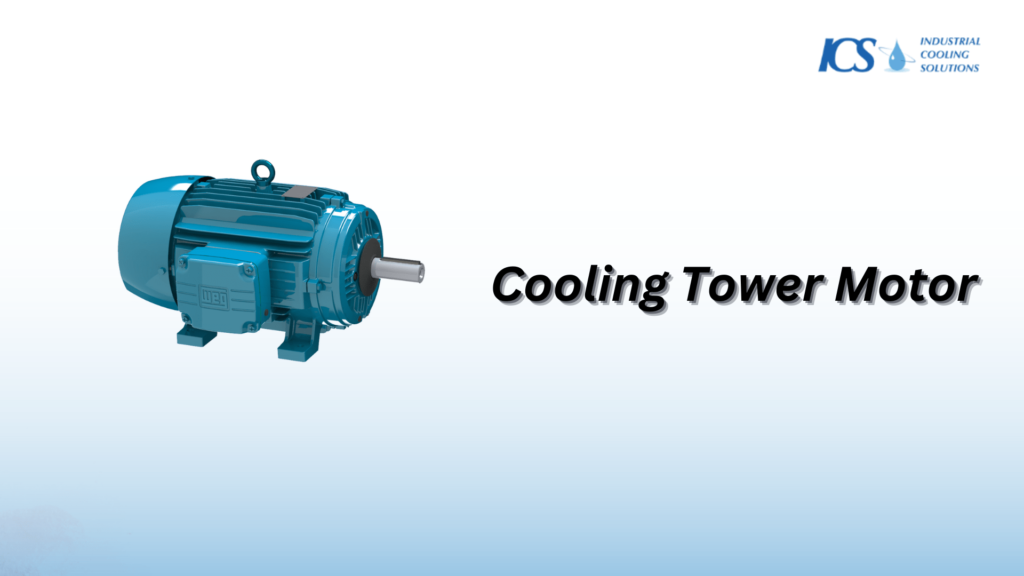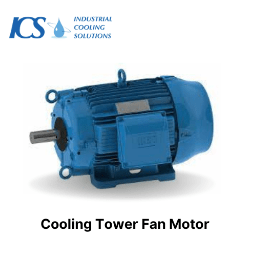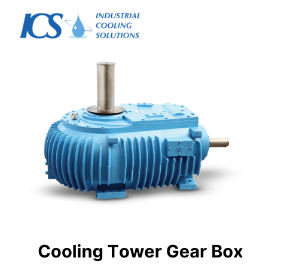หอคอยระบายความร้อนเป็นส่วนสำคัญของกระบวนการอุตสาหกรรมต่างๆ เนื่องจากช่วยระบายความร้อนออกจากระบบต่างๆ หอคอยประกอบด้วยส่วนประกอบต่างๆ มากมาย โดยแต่ละส่วนมีความสำคัญต่อการทำงานโดยรวมของหอคอย
ในบทช่วยสอนนี้ เราจะตรวจสอบส่วนประกอบต่างๆ มากมายของหอคอยระบายความร้อนและวัตถุประสงค์ของส่วนประกอบเหล่านี้ เพื่อให้คุณเข้าใจการทำงานของระบบเหล่านี้อย่างถ่องแท้ ในบล็อกนี้ เราจะเปิดเผยส่วนประกอบและฟังก์ชันที่สำคัญของหอคอยระบายความร้อน
พัดลม
พัดลมของหอระบายความร้อนซึ่งมักจะอยู่ที่ด้านบนของโครงสร้าง ถือเป็นส่วนประกอบที่สังเกตเห็นได้ชัดเจนที่สุด วัตถุประสงค์หลักคือเพื่อดึงอากาศผ่านหอระบายความร้อนเพื่อให้น้ำภายในหอระบายความร้อนและอากาศโดยรอบสามารถแลกเปลี่ยนความร้อนได้ง่ายขึ้น การไหลของอากาศที่เกิดจากการหมุนของพัดลมช่วยในการระบายความร้อนออกจากระบบและการระเหยของน้ำ คุณสามารถหามอเตอร์พัดลมของหอระบายความร้อนสำหรับอ่างน้ำร้อนได้ เลือกมอเตอร์ของหอระบายความร้อนตามโครงสร้างหอระบายความร้อนของคุณ
หน้าที่ของพัดลม
- สร้างการไหลเวียนของอากาศเพื่อแลกเปลี่ยนความร้อนโดยดึงอากาศผ่านหอคอย
- ช่วยให้น้ำระเหยออกไปโดยกำจัดความร้อนออกจากระบบ
- รับประกันการระบายความร้อนที่มีประสิทธิภาพและการระบายอากาศที่เหมาะสม
- สามารถเปลี่ยนได้เพื่อควบคุมความสามารถในการระบายความร้อนของหอคอย
- ทำงานอย่างต่อเนื่องเพื่อรักษาอุณหภูมิให้อยู่ในระดับที่เหมาะสม
วัสดุเติม
วัสดุที่เรียกว่าวัสดุเติมหอคอยจะถูกวางไว้ภายในหอคอยระบายความร้อนเพื่อเพิ่มพื้นที่ผิวที่อาจใช้ในการถ่ายเทความร้อน วัสดุเหล่านี้มักจะวางซ้อนกันในโครงสร้างคล้ายรังผึ้งและประกอบด้วยพลาสติกหรือไม้ การโต้ตอบที่มากขึ้นระหว่างน้ำและอากาศที่เดินทางผ่านหอคอยนั้นเป็นไปได้ด้วยฟิล์มบางๆ ที่ก่อตัวขึ้นเมื่อน้ำเคลื่อนที่ผ่านวัสดุเติม เป็นผลให้กระบวนการแลกเปลี่ยนความร้อนทำงานได้อย่างมีประสิทธิภาพมากขึ้น
หน้าที่ของวัสดุเติมหอคอย
- วัสดุเติมหอคอยระบายความร้อนจะขยายพื้นผิวที่สามารถใช้ในการถ่ายเทความร้อน
- สร้างส่วนผสมอากาศและน้ำที่ปั่นป่วนเพื่อการแลกเปลี่ยนความร้อนที่มีประสิทธิภาพ
- เพิ่มประสิทธิภาพของหอคอยระบายความร้อนโดยส่งเสริมการระเหย
- ป้องกันไม่ให้หยดน้ำเกาะโดยสร้างกำแพงกั้นที่หยดน้ำต้องเกาะติด
- มีจำหน่ายในวัสดุหลายประเภท เช่น โลหะ ไม้ และพลาสติก
ระบบจ่ายน้ำ
น้ำจะต้องกระจายอย่างสม่ำเสมอทั่วทั้งวัสดุเติมของหอคอยหล่อเย็นโดยใช้ระบบจ่ายน้ำ โดยปกติจะรวมอ่างจ่ายน้ำ หัวฉีด และท่อไว้ด้วย น้ำจะถูกกระจายหรือพ่นลงบนวัสดุเติมที่ด้านบนของหอคอยหลังจากถูกสูบออกจากอ่างหอคอย การทำให้วัสดุเติมเปียกเท่าๆ กันด้วยการกระจายที่เหมาะสมจะช่วยเพิ่มประสิทธิภาพการถ่ายเทความร้อนให้สูงสุด
หน้าที่ของระบบจ่ายน้ำ
- กระจายน้ำอย่างสม่ำเสมอทั่วทั้งวัสดุเติมเพื่อเพิ่มพื้นผิวสัมผัส
- รับประกันว่าวัสดุเติมมีความชื้นสม่ำเสมอเพื่อการถ่ายเทความร้อนที่มีประสิทธิภาพ
- ควบคุมอัตราการไหลของน้ำเพื่อตอบสนองความต้องการในการระบายความร้อนของระบบ
- ลดปริมาณน้ำที่สูญเสียไปโดยป้องกันการหกและการกระจายที่ไม่สม่ำเสมอ
- รวมถึงอ่างจ่ายน้ำ ท่อ และปั๊มเพื่อควบคุมการไหลเวียนของน้ำ
เครื่องกำจัดละอองน้ำ
จุดประสงค์ของเครื่องกำจัดละอองน้ำคือการเก็บรวบรวมละอองน้ำที่ลอยอยู่ในอากาศขณะออกจากหอหล่อเย็น ละอองน้ำเป็นคำเรียกละอองน้ำเหล่านี้ซึ่งอาจมีสารมลพิษหรือสารเคมีจากน้ำที่ไหล เครื่องกำจัดละอองน้ำช่วยลดการสูญเสียน้ำและหยุดการปนเปื้อนในสิ่งแวดล้อมโดยการเก็บรวบรวมละอองน้ำที่ลอยอยู่ในอากาศแล้วกระจายไปยังอ่างหอหล่อเย็น
ฟังก์ชั่นกำจัดการพัดพา
- ดักจับหยดน้ำที่ลอยอยู่ในอากาศขณะออกจากหอหล่อเย็น
- การนำน้ำที่รวบรวมกลับคืนสู่แอ่งจะช่วยลดการสูญเสียน้ำและการปนเปื้อนของสิ่งแวดล้อม
- ลดการสูญเสียน้ำที่พัดกลับมาเพื่อเพิ่มประสิทธิภาพของหอหล่อเย็น
- ประกอบด้วยแผงตาข่ายหรือแผ่นกั้นที่ใช้สำหรับดักจับและรวบรวมหยดน้ำฝน
- ช่วยในการปฏิบัติตามภาระผูกพันทางกฎหมายในการป้องกันมลพิษและการอนุรักษ์น้ำ
แอ่ง
น้ำจะรวมตัวกันในแอ่งของหอหล่อเย็น ซึ่งอยู่ที่จุดต่ำสุด ก่อนที่จะถูกป้อนกลับเข้าไปในระบบ ช่วยรักษาระดับน้ำในหอให้อยู่ในระดับที่เหมาะสม และทำหน้าที่เป็นอ่างเก็บน้ำสำหรับน้ำที่หมุนเวียน นอกจากนี้ แอ่งยังให้ที่สำหรับตะกอนและเศษซากอื่นๆ เพื่อตกตะกอนออกจากน้ำ ช่วยให้ระบบจ่ายน้ำไม่มีสิ่งกีดขวาง
หน้าที่ของอ่างเก็บน้ำ
- ทำหน้าที่รวบรวมและกักเก็บน้ำหมุนเวียนในระบบหอหล่อเย็น
- มีอ่างเก็บน้ำเพื่อรักษาสมดุลของระบบและระดับน้ำให้เหมาะสม
- หยุดการอุดตันโดยปล่อยให้สิ่งสกปรกและตะกอนตกตะกอนในน้ำ
- ทำให้เข้าถึงพื้นที่สำหรับทำความสะอาดและบำรุงรักษาได้ง่ายขึ้น
- ติดตั้งเซ็นเซอร์เพื่อคอยตรวจสอบคุณภาพน้ำและระดับน้ำเพื่อควบคุมการทำงาน
เครื่องดักน้ำไหล
เครื่องดักน้ำไหลซึ่งคล้ายกับเครื่องกำจัดน้ำไหลเป็นอุปกรณ์ที่รวบรวมหยดน้ำเมื่อออกจากหอหล่อเย็น โดยปกติแล้ว เครื่องดักน้ำไหลจะอยู่เหนือวัสดุเติมเพื่อดักหยดน้ำที่อาจหลุดรอดจากการจับของเครื่องกำจัดน้ำได้ โดยการนำน้ำที่เก็บรวบรวมกลับมาใช้ใหม่ในอ่างเก็บน้ำของหอหล่อเย็น เครื่องดักน้ำไหลจะช่วยลดการสูญเสียน้ำและผลกระทบต่อสิ่งแวดล้อมได้มากขึ้น
หน้าที่ของ
- วางอยู่เหนือวัสดุเติมเพื่อรวบรวมหยดน้ำที่อาจออกมาจากเครื่องกำจัด
- ส่งน้ำที่รวบรวมได้กลับคืนสู่แอ่งน้ำ จึงลดการสูญเสียน้ำและผลกระทบเชิงลบต่อระบบนิเวศ
- ช่วยเพิ่มประสิทธิภาพให้กับเครื่องกำจัดดริฟต์เพื่อรับประกันการจัดการดริฟต์ที่มีประสิทธิภาพในหอหล่อเย็น
- เข้าถึงได้ในรูปแบบต่างๆ รวมถึงระบบใบมีดและตะแกรงตาข่าย
- ต้องมีการบำรุงรักษาและการตรวจสอบเป็นประจำเพื่อรับประกันการทำงานที่ถูกต้อง
ช่องระบายอากาศ
ภายนอกหอหล่อเย็นล้อมรอบด้วยช่องระบายอากาศซึ่งใช้เพื่อควบคุมการไหลของอากาศภายในโครงสร้าง ผู้ปฏิบัติงานสามารถจัดการอัตราการแลกเปลี่ยนความร้อนได้โดยการเปลี่ยนตำแหน่งของช่องระบายอากาศของหอหล่อเย็น ซึ่งจะส่งผลต่อปริมาณอากาศที่เข้าสู่หอ เพื่อให้แน่ใจว่าหอทำงานได้อย่างมีประสิทธิภาพ ช่องระบายอากาศยังช่วยป้องกันเศษซากและสิ่งแปลกปลอมไม่ให้เข้าสู่โครงสร้างอีกด้วย
หน้าที่ของช่องระบายอากาศของหอระบายความร้อน
- จัดการการไหลของอากาศในหอระบายความร้อนเพื่อเพิ่มประสิทธิภาพการแลกเปลี่ยนความร้อนให้สูงสุด
- ปรับให้เข้ากับปริมาณอากาศที่เข้ามาของหอระบายความร้อนได้ตามความต้องการในการระบายความร้อน
- ป้องกันสัตว์ป่า ขยะ และสิ่งแปลกปลอมไม่ให้เข้ามาในหอระบายความร้อน
- ช่วยให้หอระบายความร้อนมีความสวยงามขึ้นและลดเสียงรบกวน
- มีให้เลือกหลายรูปแบบ เช่น ช่องระบายอากาศแบบคงที่และแบบเคลื่อนย้ายได้
ส่วนประกอบโครงสร้าง
ส่วนประกอบโครงสร้างของหอระบายความร้อนประกอบด้วยคานรองรับ เสา และปลอกหุ้ม นอกเหนือจากชิ้นส่วนที่ใช้งานได้ดังที่ได้กล่าวไปแล้ว ชิ้นส่วนเหล่านี้ทำให้หอระบายความร้อนมีความเสถียรและแข็งแรง และรับประกันความสมบูรณ์ของหอในสถานการณ์การใช้งานที่หลากหลาย เพื่อให้หอระบายความร้อนทำงานได้อย่างปลอดภัยและหลีกเลี่ยงความล้มเหลวของโครงสร้าง จำเป็นต้องบำรุงรักษาส่วนประกอบโครงสร้างอย่างถูกต้อง
หน้าที่ขององค์ประกอบโครงสร้าง
- ให้ความมั่นคงและรองรับโครงสร้างให้กับหอคอยระบายความร้อน
- ทนต่อแรงกระแทกจากแผ่นดินไหว แรงลม และความท้าทายด้านสิ่งแวดล้อมอื่นๆ
- ประกอบด้วยวัสดุที่แข็งแรง คาน เสา และโครงสร้าง
- สร้างขึ้นเพื่อทนต่อสถานการณ์การทำงานที่ยากลำบากและรักษาความสมบูรณ์ตลอดเวลา
- ต้องได้รับการบำรุงรักษาและตรวจสอบเป็นประจำเพื่อรับประกันอายุการใช้งานและการทำงานที่ปลอดภัย
คุณจะหาชิ้นส่วนหอคอยระบายความร้อนคุณภาพสูงได้จากที่ไหน
ในการดำเนินการทางอุตสาหกรรมหลายๆ แห่ง หอคอยระบายความร้อนมีความจำเป็นสำหรับการกระจายความร้อนและรักษาสภาพการทำงานที่เหมาะสม การทำความเข้าใจส่วนประกอบที่แตกต่างกันและบทบาทของส่วนประกอบเหล่านี้ภายในหอคอยระบายความร้อนมีความสำคัญต่อการรับประกันการทำงานที่เหมาะสมที่สุดและบรรลุประสิทธิภาพสูงสุด ด้วยการบำรุงรักษาและสังเกตองค์ประกอบเหล่านี้อย่างเหมาะสม ผู้ปฏิบัติงานสามารถรับประกันการทำงานที่เชื่อถือได้และประหยัดของระบบระบายความร้อนได้ คุณสามารถรับชิ้นส่วนหอคอยระบายความร้อนทั้งหมดจาก ICS ในราคาที่เหมาะสม ติดต่อเราเพื่อรับแค็ตตาล็อกผลิตภัณฑ์ของเรา นอกจากนี้ เรายังให้บริการเปลี่ยนชิ้นส่วนหอคอยระบายความร้อนสำหรับกระปุกเกียร์หอคอยระบายความร้อนของคุณอีกด้วย



